The Vietnam War
Corporal Bob Monkcom of Leumeah at Nui Dat in 1968. Many local men were sent from suburban Campbelltown to fight in the Vietnam War. Bob served with 1RAR at the Battle of Coral Fire Base in May-June 1968. Australian losses were 25 killed and 99 wounded in the three-week series of actions.
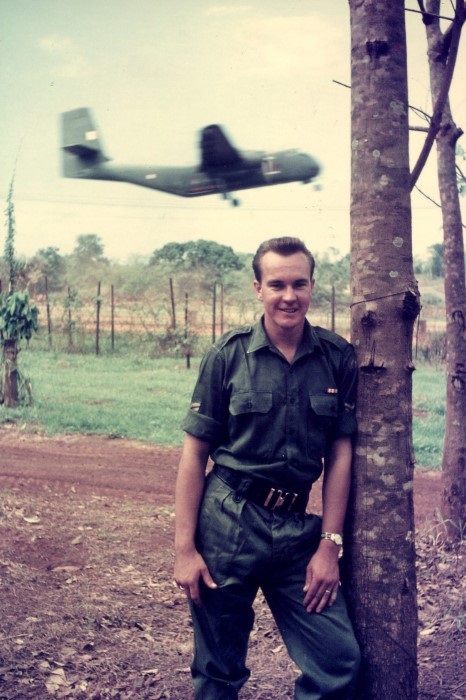
(Image sourced from Monkcom Family Collection)
End of an era- last train to climb Kenny Hill
On the 1st January, 1963, the affectionately nick-named Pansy would make her last historical run between Camden and Campbelltown. The nine car special, with over five hundred passengers started at Sydney Terminal to Campbelltown and thence on to Camden, with several photo stops on the way. Following a stop-over of several hours, Pansy made her way to Campbelltown for the last time. Thus did 80 years of rail service between Camden and Campbelltown come to an end.
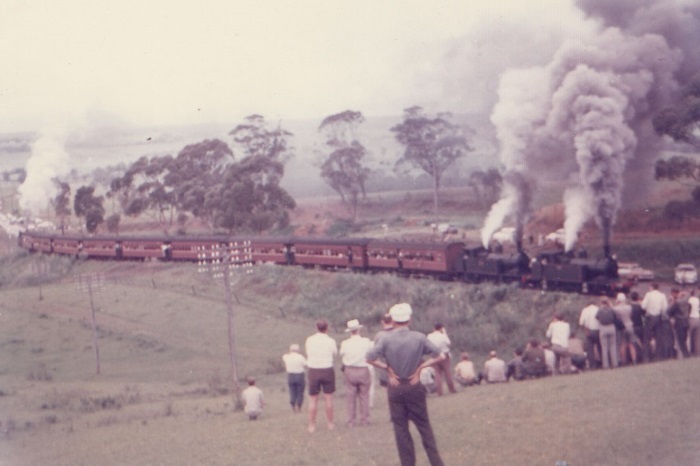
(Image sourced from Thomson Collection, Campbelltown City Library)
Campbelltown becomes a City AND we get electric trains!
Up to 1968, Campbelltown was experiencing huge growth and accelerated progress. The state government announced in 1960 that Campbelltown would become a ‘satellite town'. The electrification of the railway was close at hand, and the announcement was made at the beginning of 1968 that the creation of the City of Campbelltown, and the electrification of the railway would both be inaugurated on the same day. Huge celebrations witnessed by hundreds of people, formalities with VIPs, and a great procession of floats were part of this most auspicious day, which took place on Saturday May 4th. Front Page of the Campbelltown-Ingleburn News (now the Advertsier) in May 1968, celebrating the declaration of Campbelltown as a City.
Front Page of the Campbelltown-Ingleburn News (now the Advertsier) in May 1968, celebrating the declaration of Campbelltown as a City.
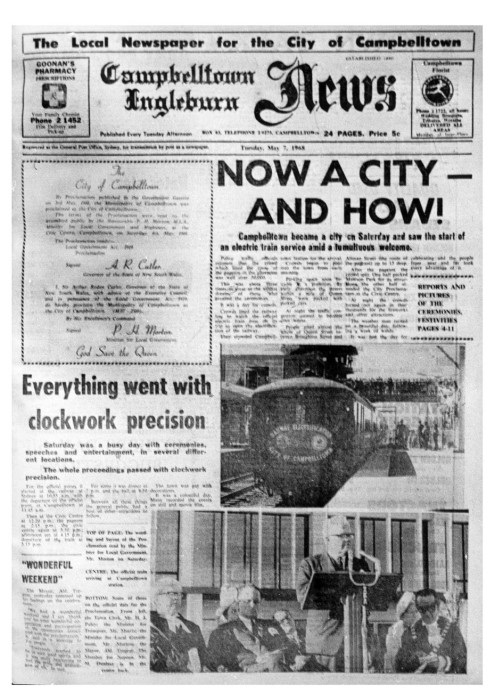
(Image sourced from Campbelltown-Macarthur Advertiser collection)
First electrified train service arriving at Campbelltown Railway Station(PDF, 312KB) 1968 below.
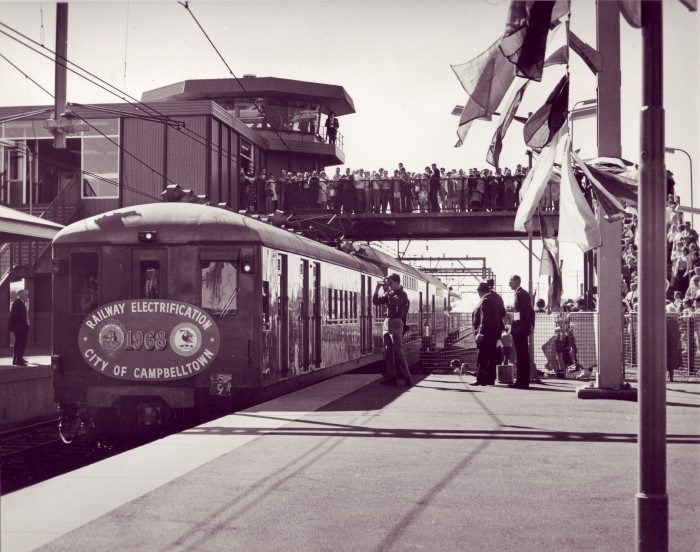
(Image sourced from Geoff Eves Collection Campbelltown City Library)
Huge crowds gathered at Campbelltown Station for the official opening of the electric line to Sydney.

(Image sourced from Geoff Eaves Collection)
Campbelltown Catholic Club Opening
From small beginnings and creative ideas, the Catholic Club has grown into the behemoth it is today. Campbelltown Catholic Club opened its doors in 1968. The germ of an idea began to form amongst a group of men who had volunteered their help in building classrooms for the burgeoning St John's Primary School. The concept of a licensed club for Catholics to raise funds for schools. A meeting was held in Marc of 1965 to formally develop the idea. The Campbelltown Catholic Club Ltd was incorporated as a company. The club needed a clubhouse and a site was chosen. A liquor license was granted and construction on the Club began in May 1968. The Club opened its doors on December 5th 1968. Today that original club building would fit into the entrance foyer. The original building stood on the site now generally occupied by the food court...and would keep expanding, outwards and upwards, for the next half century.
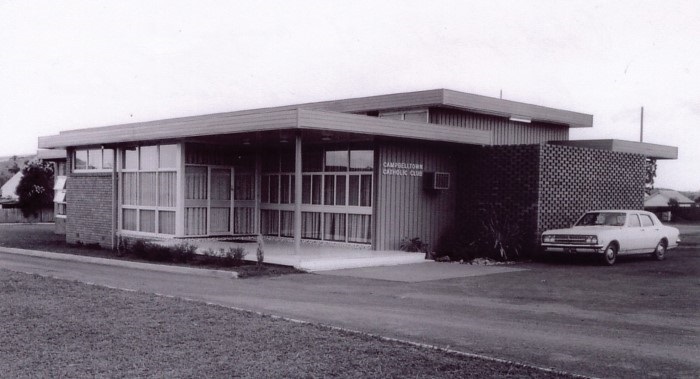
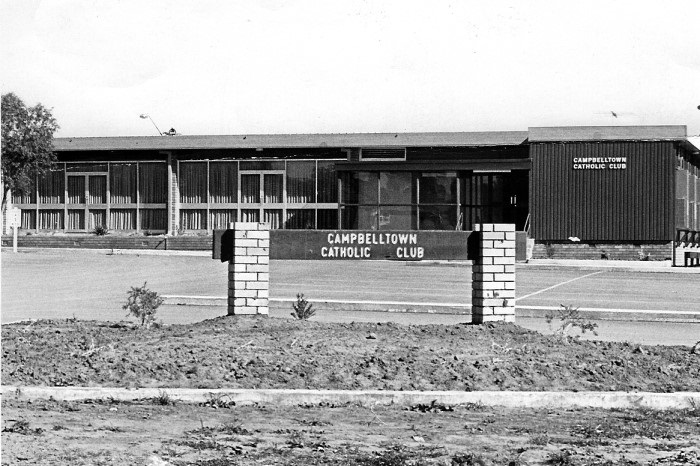
(Image sourced from Campbelltown Catholic Club collection)
Building of the new Council Administration Building
The administration centre opened on Saturday, 28th November, 1964. Planning for the new office building had begun in 1961 when the school of arts building provided inadequate to accommodate council staff. It was easily the highest building in the town and was seen for kilometres around Campbelltown. The design was seen as "providing a strong vertical emphasis to the Civic Centre". Mayor Fraser at the time called it "a symbol of our faith in the future". The first stage of the Master Plan was prepared in early 1961. The first sod for construction was turned in June 1963.
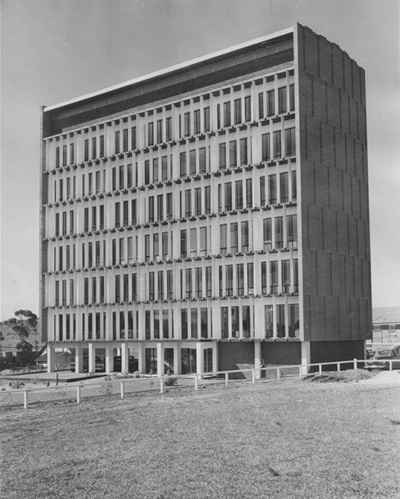
(Image sourced from Fairfax Collection, Campbelltown City Library)
Campbelltown Show
Campbelltown Show in 1963 with Kath Sedgwick placing a sash on Showgirl Drenda Brown

(Image sourced from Country Life Newspaper)
New Campbelltown Swimming Pool
A newspaper clipping of swimming lessons at the new Campbelltown Swimming Pool in the late 1960s
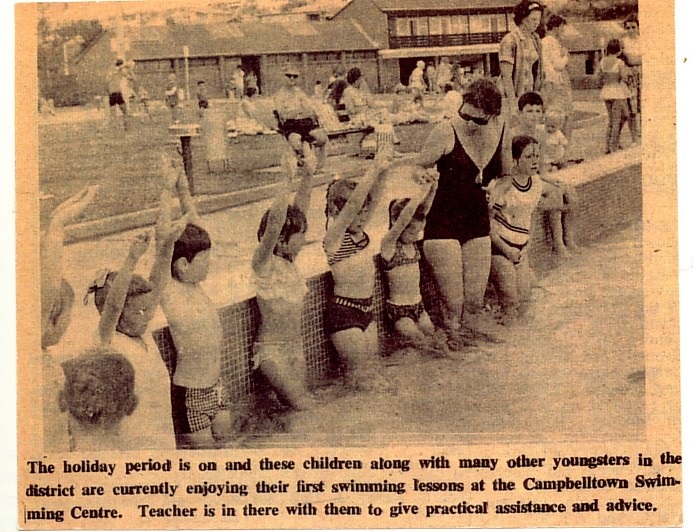
(Image sourced from Campbelltown-Macarthur Advertiser)